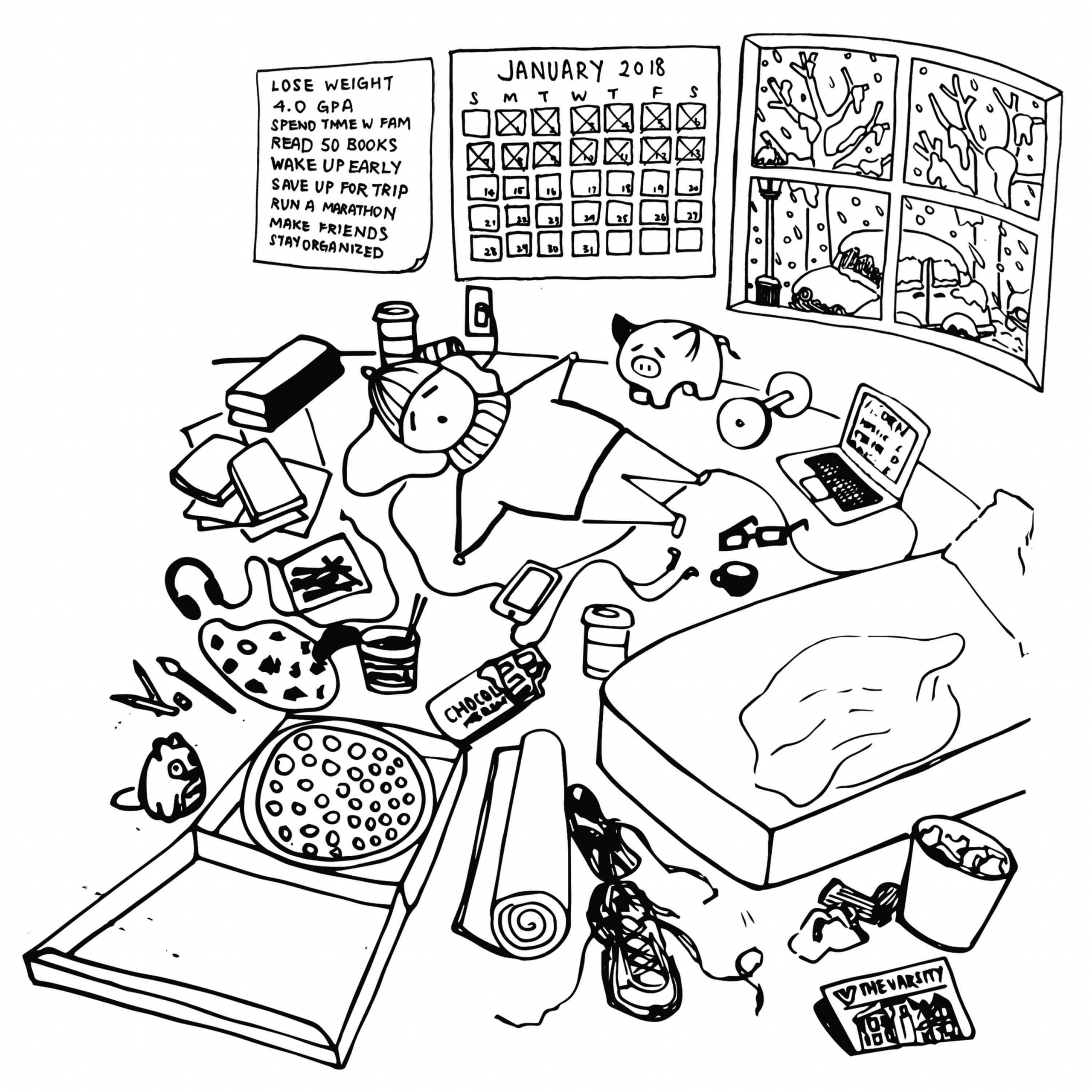The holiday cheer has finally worn off and we find ourselves in the most bleak time of the winter season. According to former Cardiff University lecturer Dr. Cliff Arnall, there are certain factors that make the third Monday in January the most depressing day of the year.
Arnall determined this date, dubbed ‘Blue Monday,’ through a series of mathematical calculations that take into account other potential causes of a dismal day. These include the arrival of post-holiday credit card statements, broken new year’s resolutions, and the age-old distaste for Mondays. But the calculations behind Blue Monday have been criticized for being pseudoscientific.
Arnall was commissioned to develop his equation by a British travel agency in 2005 and was tasked with determining when people were most likely to book a summer holiday — the rationale behind this being that people are more likely to book a summer vacation when sad.
While the factors that Arnall used in his equation are depressing truths, there is hardly scientific legitimacy to one day of the year being more depressing than all others. As useful as it would be to see depression coming from a mile away, the illness is too complex to be predicted in such a way, and Arnall’s mathematical jargon is useful only as a marketing gimmick. Still, the entire concept is not a complete myth, as there is one component with some merit that deserves attention: winter weather can cause mood fluctuations — and this can be serious.
Seasonal affective disorder (SAD) — colloquially dubbed ‘winter depression’ — is a mood disorder subtype that many understand to be a result of the colder weather. “There are [biological] theories as to why that is… which have to do with some people having a brain that is more wired to be sensitive to changes in light,” said U of T psychiatry professor Ari Zaretsky.
It has been hypothesized that serotonin levels are affected by light and that during the wintertime, the system is insufficiently activated due to decreased sunlight hours. The consequently lowered serotonin levels can lead to unregulated moods and depressive episodes.
Zaretsky explained that the occurrence of SAD can vary based on geography: approximately one per cent of Florida’s population develops SAD in the fall and winter, whereas almost nine per cent of the population in areas such as Yukon or Alaska experience it. For Toronto, the number lies at three per cent.
Light therapy is a common treatment method for SAD, which involves exposure to a light that gives off the same wavelength as sunlight for a minimum of 20–60 minutes each day, preferably in the morning.
Treatments for this disorder, unlike its causes, are not strictly biological.
Psychological and behavioural interventions are just as effective — Zaretsky pointed out that patients participating in cognitive behavioural therapy developed specifically for SAD have demonstrated significant improvements. “It’s important to recognize that just because something has a biological basis doesn’t mean that psychological interventions or behavioural interventions can’t make a difference — they can.”
There is a misconception that SAD is not as distressing as classical clinical depression, and myths like Blue Monday can perpetuate these flawed assumptions. Critics of the Blue Monday phenomenon have become more vocal about their concerns, fearing that it is skewing public knowledge of mental health and discounting the gravity of depression.
“I think [Blue Monday] develops a life of its own because there is a kind of fundamental truth to the fact that people find it difficult to face day upon day of darkened lighting circumstances,” said Zaretsky. “It’s almost like something that becomes part of the culture through media [and] advertising.”
Being faced with yet another year of companies capitalizing on bad science, there is hope that Blue Monday might at least generate conversations about and bring awareness to mental health.


